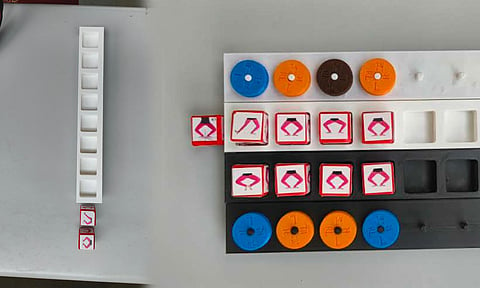

CHENNAI: Dr. Jayachandran Surendran wears many hats: he is an engineer, classical dancer, and academician. But the one field where he has truly made his mark is dance. Recently, he was awarded a design patent for his groundbreaking pedagogical dance tool, Atam, developed at IIIT-Hyderabad’s Centre for Exact Humanities.
Hailing from Perambur, Jayachandran began dancing at the age of three. What started as a spontaneous performance in kindergarten soon led to formal training at Saraswati Kala Kendra. While academics remained a strong focus, his love for dance never faded. “I’ve been learning dance since childhood, but never thought I’d take it up professionally.
Despite having a thriving career in the corporate world, I always felt the pull to return to dance. Eventually, I quit my job and joined Kalakshetra,” he recalls.
At Kalakshetra, he spent nearly a decade studying Tandava philosophy, temple architecture, and ethnochoreology. During this time, he also worked on archiving rare materials related to cultural pioneers like Rukmini Devi Arundale and Annie Besant.
His academic journey led him to IIIT-Hyderabad as a doctoral researcher, where he pursued a Ph.D. focused on form-neutral and style-neutral principles of Indian dance.
That research gave birth to Atam, a dance pedagogy tool designed to teach universal dance fundamentals to beginners, irrespective of form or style. “Atam is India’s first dance pedagogical tool to receive a design patent.
It helps answer a core question: what could be the common movement vocabulary for beginners stepping into the world of dance?”
Jayachandran explains that the method behind Atam breaks down dance movements into the smallest possible units, ones that are neither form-specific nor style-specific. “The idea is to develop a basic literacy in movement. Once that foundation is laid, students can choose which dance form they want to pursue,” he says.
Atam incorporates physical components such as dice, dials, and holders, which together create a modular system to teach body movements intuitively and playfully. “Each dice face depicts a posture - standing, half-sitting, or full-sitting - while the dials indicate foot variations, transitions (like stamping, sliding, turning), and the angles the torso should turn to.
The holders determine whether the movement should be executed on the beat or off-beat, bringing in a rhythmic and structured approach to learning,” the dancer explains. Atam remains one of the rare arts-based innovations in India to receive such recognition.